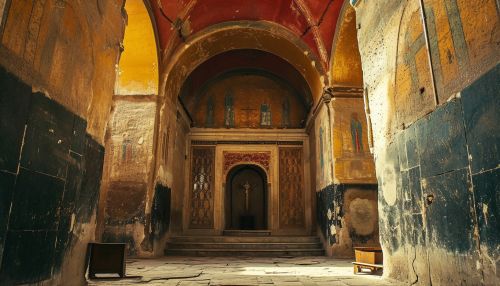Oriental Orthodox Church
Introduction
The Oriental Orthodox Churches are a group of Christian churches adhering to miaphysite Christology, with a total of approximately 60 million members worldwide. They are part of the larger group of Eastern Christian churches, which also includes the Eastern Orthodox and the Assyrian Church of the East. The Oriental Orthodox Churches are broadly part of the trinitarian Nicene Christian tradition shared by today’s mainstream churches, and represent one of its oldest and most distinct branches.


History
The Oriental Orthodox Churches trace their origins to the churches established by the apostles in the East. They have a rich and ancient history, with roots reaching back to the earliest days of Christianity. The Oriental Orthodox Churches separated from the rest of Christendom in the 5th century following the Council of Chalcedon, due to differences over the nature of Christ. This schism led to the formation of the Oriental Orthodox communion, which includes the Armenian Apostolic Church, the Coptic Orthodox Church of Alexandria, the Syriac Orthodox Church, the Malankara Orthodox Syrian Church, the Ethiopian Orthodox Tewahedo Church, and the Eritrean Orthodox Tewahedo Church.
Theology
The Oriental Orthodox Churches adhere to a Miaphysite Christological perspective, which asserts that in the one person of Jesus Christ, Divinity and Humanity are united in one "nature" ("physis"), the two being united without separation, without confusion, and without alteration. This contrasts with the Chalcedonian Creed, which accepts that Christ has two natures, one divine and one human. The Oriental Orthodox Churches also hold a high view of St. Mary, whom they call Theotokos, meaning "God-bearer".
Liturgy
The liturgical traditions of the Oriental Orthodox Churches are among the oldest and most distinct in Christendom. They use the Alexandrian Rite, the Antiochene Rite, and the Armenian Rite in their worship services. The liturgies are conducted in the ancient languages of their respective regions, such as Coptic, Ge'ez, Syriac, and Armenian. The liturgy is central to the faith and practice of these churches, and is seen as a participation in the eternal worship of heaven.
Monasticism
Monasticism holds a very important place in the Oriental Orthodox Churches. The monastic tradition in these churches is one of the oldest in Christianity. The Oriental Orthodox monasticism is primarily cenobitic, meaning monks and nuns live in communities rather than as hermits. The monastic life is considered the highest form of Christian life, and monks are highly respected in the Oriental Orthodox tradition.
Interchurch relations
The Oriental Orthodox Churches have been engaged in dialogue with other Christian churches for ecumenism. They have been in dialogue with the Eastern Orthodox and the Roman Catholic Church for many years, seeking to resolve the ancient Christological controversies that led to their separation. There have been some significant advances in these dialogues, particularly with the Roman Catholic Church, with common Christological agreements being reached.
Demographics
The Oriental Orthodox Churches are a significant Christian presence in the Middle East, Northeast Africa, and India. The largest of the Oriental Orthodox Churches are the Ethiopian and the Coptic, each with tens of millions of members. There are also significant Oriental Orthodox communities in the diaspora, particularly in North America, Europe, and Australia.
